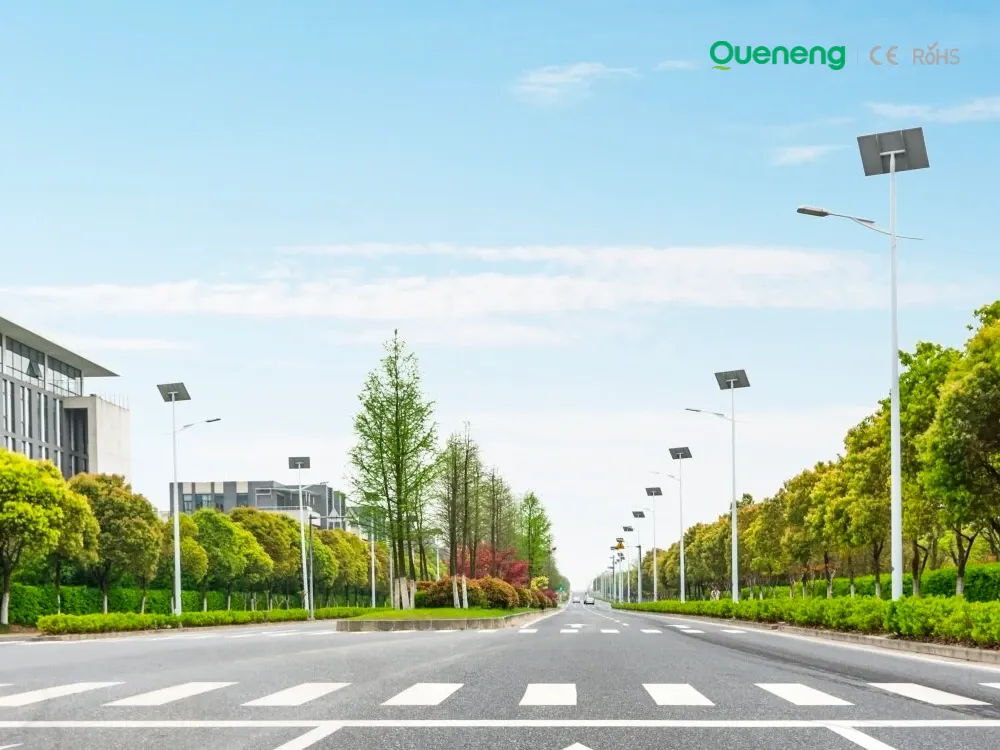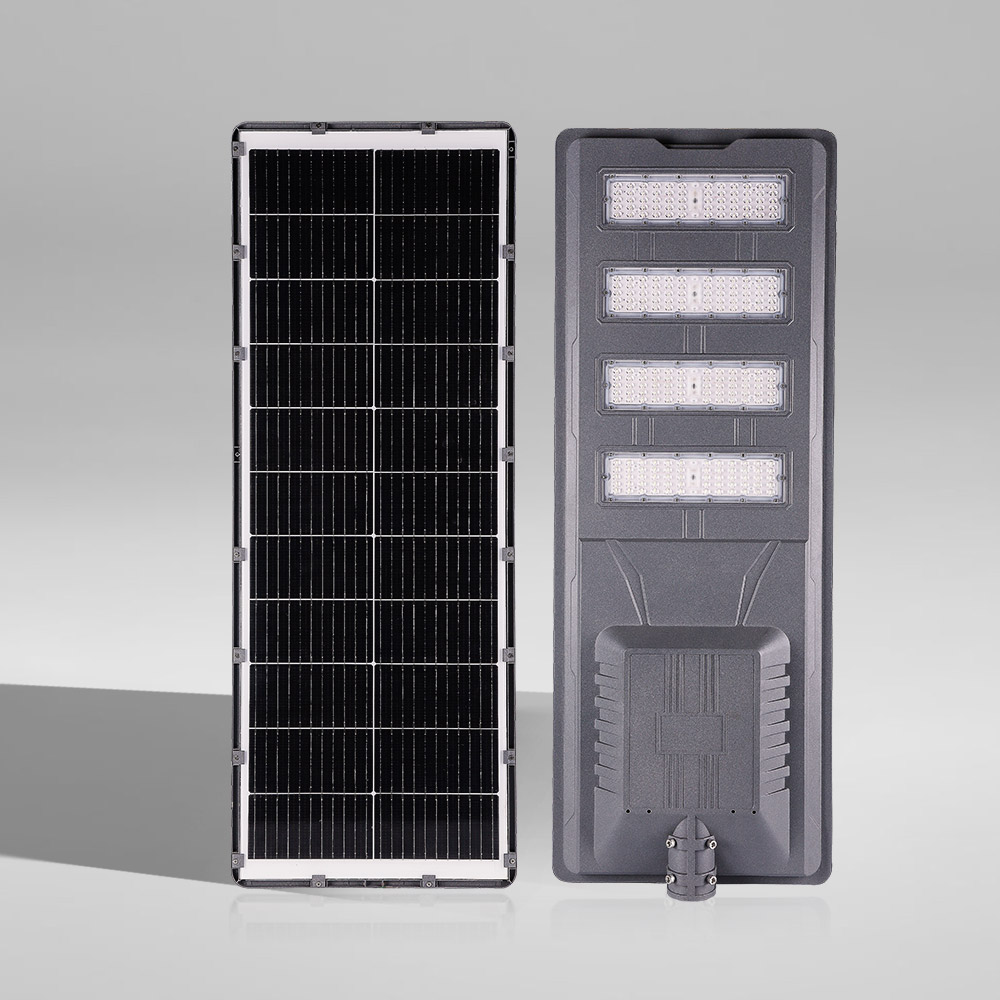How Solar Panels Power Street Lights: A Deep Dive into Solar Energy Conversion and Storage
Discover how solar panels power street lights, exploring the technology behind solar energy conversion, storage systems, and how solar-powered street lights are revolutionizing urban and rural lighting solutions.
How Solar Panels Power Street Lights: A Deep Dive into Solar Energy Conversion and Storage
Solar street lights have become an essential part of modern, sustainable urban planning. They are powered by the sun’s energy through solar panels that convert sunlight into electricity, which is then used to illuminate streets, roads, parks, and public spaces. This technology is becoming increasingly popular due to its environmental benefits and cost-effectiveness.
In this article, we will take an in-depth look at how solar panels power street lights, the process of energy conversion, the role of energy storage systems, and the advantages and challenges associated with solar-powered street lighting.

The Role of Solar Panels in Street Lighting
Solar panels play the most critical role in converting solar energy into usable electricity. These panels are made up of photovoltaic (PV) cells that harness sunlight and convert it into direct current (DC) electricity.
-
Energy Conversion:
When sunlight hits the PV cells on a solar panel, it excites electrons, creating an electric current. This current is then passed through an inverter that converts DC power into alternating current (AC), which is typically used by most electrical devices, including street lights. -
Energy Storage:
The electricity generated by the solar panels is stored in batteries, usually lithium-ion or lead-acid batteries, depending on the system design. These batteries store energy during the day for use at night or on cloudy days when sunlight isn’t available.

How Solar-Powered Street Lights Work: A Step-by-Step Breakdown
-
Daytime Charging:
During the day, solar panels absorb sunlight and convert it into electrical energy. This energy is sent to the battery bank, which stores the electricity for later use. -
Nighttime Illumination:
As the sun sets, the stored energy is released from the batteries, powering the street lights. Solar-powered lights typically use LED lamps, which consume less power while providing adequate brightness for the streets. -
Automatic Switching:
Solar street lights are equipped with a photo sensor or light sensor that detects sunlight. This sensor automatically switches the lights on at dusk and off at dawn, ensuring the lights only operate when needed.
The Role of Batteries in Solar Street Lighting
The efficiency and longevity of the solar street light system largely depend on the quality of the battery used. Batteries store the energy captured during the day and release it at night, ensuring that the street lights remain illuminated even when the sun isn’t shining.
-
Battery Types:
The most common battery types used in solar street lighting systems are lithium-ion and lead-acid. Lithium-ion batteries are more efficient, have a longer lifespan, and are more environmentally friendly compared to lead-acid batteries. -
Charging Cycles:
The efficiency of a battery is also determined by how many charging cycles it can handle. Solar batteries are designed for thousands of charge-discharge cycles, providing long-term reliability.
Advantages of Solar-Powered Street Lights
-
Cost Savings:
Solar street lights eliminate the need for electricity bills, reducing long-term operational costs. They also require minimal maintenance. -
Environmental Benefits:
Solar street lights reduce carbon footprints by relying on renewable energy. They help combat climate change by lowering greenhouse gas emissions. -
Energy Independence:
By harnessing the power of the sun, solar street lights offer a sustainable and independent source of energy, reducing reliance on the grid. -
Low Maintenance:
Solar street lights typically require very little maintenance, especially when using high-quality, durable components such as LED lights and lithium-ion batteries. -
Easy Installation:
Solar-powered street lights are easy to install because they don’t require complicated wiring or connections to the electrical grid.
Challenges of Solar-Powered Street Lights
-
High Initial Cost:
The upfront cost of installing solar street lights can be higher than conventional grid-powered street lights due to the price of solar panels, batteries, and other components. However, the long-term savings make it a worthwhile investment. -
Weather Dependence:
Solar street lights depend on sunlight to charge their batteries, so they may not perform optimally during cloudy or rainy periods. However, many systems are equipped with larger batteries to store enough energy for days without sunlight. -
Battery Lifespan:
The lifespan of the batteries used in solar-powered street lights can affect the overall cost-effectiveness. Battery replacement can be an additional expense after several years of operation. -

Frequently Asked Questions (FAQ)
Q1: How long do solar-powered street lights last?
A1: Solar street lights can last anywhere from 5 to 15 years, depending on the quality of the components and how well they are maintained. The lifespan of the battery and LED bulbs plays a significant role in determining the overall life of the system.
Q2: What type of solar panels are used in solar street lighting systems?
A2: Most solar street lighting systems use monocrystalline or polycrystalline solar panels. Monocrystalline panels are more efficient and have a higher power output, making them ideal for areas with limited sunlight.
Q3: Can solar-powered street lights work in areas with limited sunlight?
A3: Yes, solar street lights can still function in areas with limited sunlight, as long as the system is designed with larger batteries to store enough energy for nighttime use.
Q4: Do solar street lights require a lot of maintenance?
A4: No, solar street lights are designed to be low-maintenance. Regular cleaning of the solar panels and occasional battery checks are usually enough to keep the system working efficiently.
Q5: Are solar street lights more expensive to install than traditional street lights?
A5: Yes, solar street lights typically have higher upfront costs, mainly due to the solar panels and batteries. However, they offer significant long-term savings due to lower operational and maintenance costs.
Conclusion
Solar-powered street lights are an excellent solution for providing eco-friendly and cost-effective lighting in urban and rural areas. By harnessing solar energy, these lights provide bright and reliable illumination without the need for grid electricity. Despite some challenges, such as weather dependence and high initial costs, the long-term benefits—such as cost savings, environmental impact reduction, and energy independence—make solar street lights a promising option for sustainable urban infrastructure.
For more information on solar street lighting solutions, or if you’re looking to install solar-powered lights in your area, contact our team at GuangDong Queneng Lighting Technology Co., Ltd. for expert guidance and product recommendations.

Have more questions about our products or services?
The latest hot news you might like

Discover how solar panels power street lights, exploring the technology behind solar energy conversion, storage systems, and how solar-powered street lights are revolutionizing urban and rural lighting solutions.

Learn how AC Solar Hybrid Street Lights work, their advantages, disadvantages, system behavior in low-sunlight conditions, and why hybrid technology is ideal for regions with unstable sunlight.

Municipalities around the world are increasingly adopting solar-powered streetlights as part of their urban development strategies. Rising energy costs, the need for sustainable infrastructure, and government green initiatives are driving cities to switch from traditional street lighting to advanced LED solar streetlights.
Queneng Lighting provides municipalities with cost-effective, energy-efficient, and durable solar lighting solutions, ensuring safe and sustainable public spaces.

In recent years, the purchase of solar streetlights for municipalities has become a growing trend across the globe. Local governments are under pressure to reduce public expenditure, promote green energy, and create safer communities. Solar streetlights provide a reliable, cost-effective, and sustainable solution that meets these needs. Queneng Lighting, as a leading solar street lighting manufacturer, has supported multiple municipal projects worldwide with customized and energy-efficient solutions.
FAQ
Solar Street Light Luqing
What kind of maintenance does the solar street light require?
Solar street lights are designed for low maintenance. The primary maintenance task is to ensure the solar panels are clean and free of debris to optimize their charging efficiency. Periodic checks of the battery and LED performance may also be necessary to ensure long-term functionality.
Battery Types and Applications
What is the lifespan of rechargeable batteries used in cordless phones?
1. After charging, the call time becomes shorter every time;
2. The call signal is not clear enough, the reception effect is blurry, and the noise is loud;
3. The distance between the cordless phone and the base needs to be closer and closer, that is, the range of use of the cordless phone is getting narrower and narrower.
What types of batteries are used in emergency lights?
2. Adjustable valve lead-acid battery;
3. Other types of batteries can also be used if they meet the corresponding safety and performance standards of the IEC 60598 (2000) (emergency lighting part) standard (emergency lighting part).
Solar Street Light Lufei
How long does it take to install a solar street light?
Installation typically takes 1-2 hours, depending on the complexity of the setup. No external wiring is required, which makes installation faster and simpler compared to traditional street lighting.
Battery Performance and Testing
What is a temperature cycling experiment?
1) The battery is changed from normal temperature to 66±3℃ and 15±5% for 1 hour.
2) Place it for 1 hour at a temperature of 33±3℃ and a humidity of 90±5℃.
3) Change the condition to -40±3℃ and leave it for 1 hour
4) Leave the battery at 25℃ for 0.5 hours
These 4 steps complete a cycle. After these 27 cycle experiments, the battery should have no leakage, alkali creep, rust or other abnormal conditions.
Tourist Attractions and Resorts
Will solar lights stay on throughout the night?
Yes, solar lights are designed to stay on all night long, provided they are installed in areas that receive adequate sunlight during the day. The solar panels charge during daylight hours and power the lights after dark.

Queneng's Luzhou Solar Street Light provides sustainable, energy-efficient outdoor LED lighting. Powered by solar energy, it's a cost-effective and eco-friendly solution for illuminating streets and pathways. A reliable and durable LED solar street light.
If you would like more information about Queneng solar lighting solutions, please send us a message by filling out the form below. Our professional team will get back to you within 24 hours!
Rest assured that your privacy is important to us, and all information provided will be handled with the utmost confidentiality.
Schedule a Meeting

Book a date and time that is convenient for you and conduct the session in advance.
Have more questions about our products or services?



















